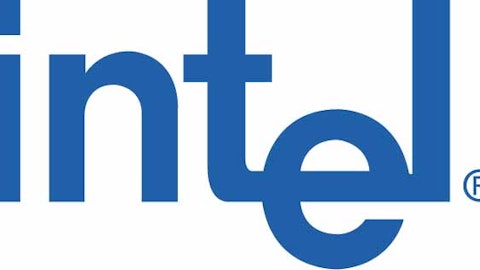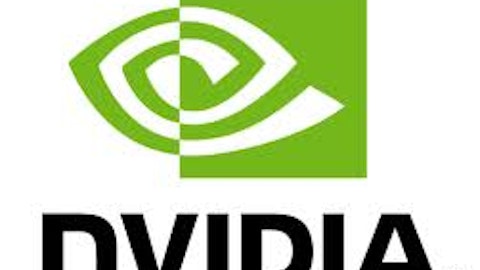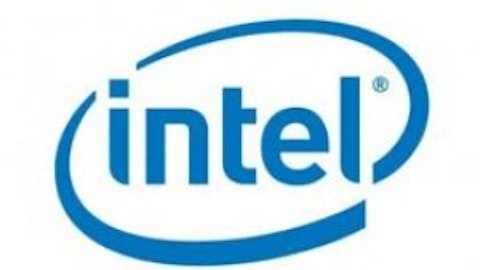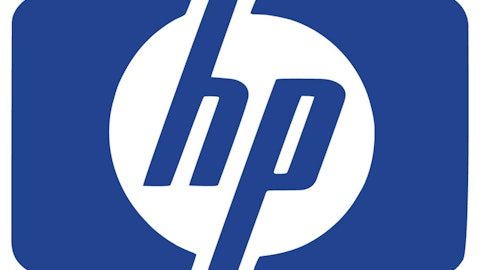I am perplexed by the announcement of Intel Corporation (NASDAQ:INTC)‘s intention to enter the streaming market, or Internet TV as it is being called. For those that paid as little attention as I did, Intel is offering to stream TV shows 7 days after airing without having to program your DVR. Basically, we’re all busy people, and we cannot be bothered to watch shows when they air or to program our DVRs properly. Most people are DVR-savvy, but that knowledge will fall into the arcane eventually, like programming a VCR.

After being dominant in semiconductors, processors really, for a long time the market is finally changing. The PC market is going to shrink and flatten out. I will always have a desktop for gaming purposes, but overall the market is shrinking or stagnant. It is not coming back.
Intel made one size fits all processors. The goal was to have the broadest appeal. It allowed Intel to rise to the position it is now. Power and heat issues were never really an issue during the rise of desktop computers. A bigger fan and a better power supply would do the trick. Heat issues came into play with laptops, but even then a really hot laptop led to a warning to be careful placing the laptop on skin. Hence the change from laptop to notebook in nomenclature. Despite all the space and heat-reducing features, when smartphones came around Intel chips couldn’t make the cut.
ARM Holdings plc (ADR) (NASDAQ:ARMH) could be called the most direct, in industry terms, reason for Intel’s troubles. Obviously, ARM’s success and Intel’s difficulties stem from the same large scale factors. Smaller products requiring smaller chips. In computing, smaller always defeats the larger product as a rule of thumb. We have gone from massive mainframes to small tablets and phones. ARM is all about smaller. System on chip downsizes the traditional computer into a small piece of hardware that has everything you need to run a device.
ARM’s approach is not the one size fits all. They make their own processors, but they also license out the instruction set. The flexibility for customers to design something that suits their needs perfectly. Instead of one size fits all there is a tailored option. PCs were perfect for Intel’s universal approach. Different manufacturers could use one of Intel’s products despite the other components as long as they were all compatible. Everything is becoming specialized. You cannot cobble together a smart phone or tablet from off the shelf components at home.
ARM will continue reaping the rewards of being the source in one way or another of smart phone chips. Advanced Micro Devices, Inc. (NYSE:AMD) is going to debut a SeaMicro server with ARM-based chips in 2014. High power servers are not the only style of servers needed, there are many tasks that do not require high processing power individually though there are a ton of them. That is where these microservers come in. They are basically a cluster of small computer systems shoved into a box, and the boxes are mounted on racks. A software, called a fabric, allows all the systems in all the boxes to function in unison.
Intel is pushing its x86-based chips for servers. If servers go with ARM-based chips as a standard, then Intel will be in serious trouble as their core business is rendered a thing of the past with applicability only in what remains of the PC market. AMD is pushing for ARM-based chips in servers but only with microservers, which may or may not become a significant part of the overall server market. If it becomes significant it will take a large chunk of revenue from traditional servers.
ARM will continue to benefit even if AMD fails, though it seems to be at least fairly valued if not overvalued. AMD is facing the same problems as Intel without the benefit of being the dominant company in a flagging market. That actually makes me want AMD over Intel. AMD is at the bottom and has everything to gain. If it loses fine, you can invest change and reap big rewards. Intel has everything to lose, and the share price has a long way to drop while it finds itself.
Internet TV, Really?
Intel will need to work hard to stay relevant into the future, and microservers seem to be a key part of that strategy. Intel is looking for new avenues of growth and relevance in addition to its rearguard action in processors. Hence, its foray into Internet TV.
The concept is not the problem, though it is well outside Intel’s comfort zone. I don’t care what chips they stick in the box, it is not a natural evolution of Intel’s business. Random forays into the “it” business does not always work out well. I always hold up the Cisco camcorders as an example. Consumer products were hot, so it probably seemed like a good idea. Streaming is so in right now. Companies fall into fads like high school kids, and just like those kids they sometimes pay top dollar.
Content will be the hardest part. It is not just about having TV shows available 7 days. There will be a streaming service. While these services are fighting it out, the content providers are enjoying the fruits of their outdated model. A reckoning is coming for them, but that is a different article. There is a reason streaming is not the revolution it is supposed to be, despite all the pieces being there. Content providers have no incentive to make their content available.
The same technology that makes streaming possible makes it easy for content providers to set up their own streaming services. It is too early to tell if Intel has really cracked it. A quick Internet search yields some really strange positive energy. I am still scratching my head trying to understand the situation. I will avoid Intel based upon its heavy dependence on the PC market.
The article Intel’s Internet TV Novel Feature A Game-Changer? originally appeared on Fool.com and is written by Nihar Patel.
Copyright © 1995 – 2013 The Motley Fool, LLC. All rights reserved. The Motley Fool has a disclosure policy.





